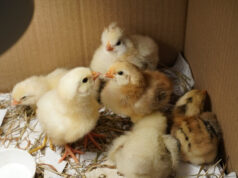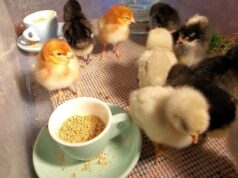Raising chicks is a rewarding experience that brings joy to many poultry enthusiasts. A crucial element to ensure their healthy growth is a chick brooder with lid. This setup provides a safe and controlled environment for chicks, protecting them from hazards and maintaining the ideal temperature and humidity. In this article, we will explore the importance of using a chick brooder with lid and how to set it up effectively for your fledgling flock.

Why Use a Chick Brooder with Lid?
A chick brooder with lid serves multiple purposes. Firstly, it keeps the chicks safe from predators, drafts, and curious pets. Secondly, the lid helps maintain consistent heat levels, crucial for the chicks’ development. Finally, it minimizes the risk of chicks escaping, which can lead to accidents or exposure to harmful elements.
Choosing the Right Brooder
Size and Space
The size of the brooder depends on the number of chicks you plan to raise. Ensure there is enough space for them to move freely, as overcrowding can lead to stress and health issues. A good rule is to provide at least 0.5 square feet per chick.
Material Considerations
Brooders can be made from various materials like plastic, wood, or metal. Each material has its benefits. For instance, plastic is easy to clean, while wood offers better insulation. Consider your specific needs and preferences when choosing the material.
Setting Up Your Chick Brooder
Temperature Control
Maintaining the right temperature is vital. Start with a temperature of 95F during the first week, reducing it by 5F each subsequent week until the chicks are fully feathered. Use a reliable heat source, such as a heat lamp, and monitor with a thermometer.
Bedding Options
Soft and absorbent bedding, like pine shavings, provides comfort and aids in odor control. Avoid slippery materials that can cause leg injuries. Ensure the bedding is clean and dry to prevent illnesses.
Feeding and Watering
Provide feeders and waterers designed for chicks to prevent spills and contamination. Ensure they are easily accessible and regularly cleaned. Start with a high-quality chick starter feed to support their growth.
Maintaining the Brooder Environment
Regular Cleaning
Keeping the brooder clean is essential to prevent diseases. Regularly change the bedding and sanitize feeders and waterers. Remove any uneaten food and droppings promptly.
Monitoring Health
Observe your chicks daily for any signs of illness, such as lethargy or unusual behavior. Consult with a veterinarian if you notice any concerning symptoms.
Socializing and Enrichment
Chicks are social creatures. Spend time interacting with them to build trust and reduce stress. Introduce safe toys or perches to stimulate their curiosity and promote physical activity.
Transitioning Chicks to the Coop
As your chicks grow, they will eventually outgrow the brooder. Gradually acclimate them to the outdoor coop by allowing supervised visits during warm days. For more details on the transition process, refer to this guide.
Common Mistakes to Avoid
Many beginners make the mistake of overcrowding the brooder or neglecting temperature control. Avoid these common pitfalls by planning appropriately and regularly checking the environment.
Conclusion
Setting up a chick brooder with lid is an essential step in raising healthy and happy chicks. By choosing the right materials, maintaining optimal conditions, and avoiding common mistakes, you can ensure a successful start for your feathered friends. For additional tips and resources, visit The Chicken Chick.

FAQs
What is the purpose of a brooder lid?
A brooder lid helps maintain stable temperatures, prevents chicks from escaping, and keeps predators at bay.
How often should I clean the brooder?
Cleaning frequency depends on the number of chicks, but generally, you should clean the brooder at least once a week or more often if needed.
When should I move chicks to the coop?
Chicks can transition to the coop when they are fully feathered, usually around 6-8 weeks of age. Gradual introduction to the new environment is advised.
This article contains affiliate links. We may earn a commission at no extra cost to you.











